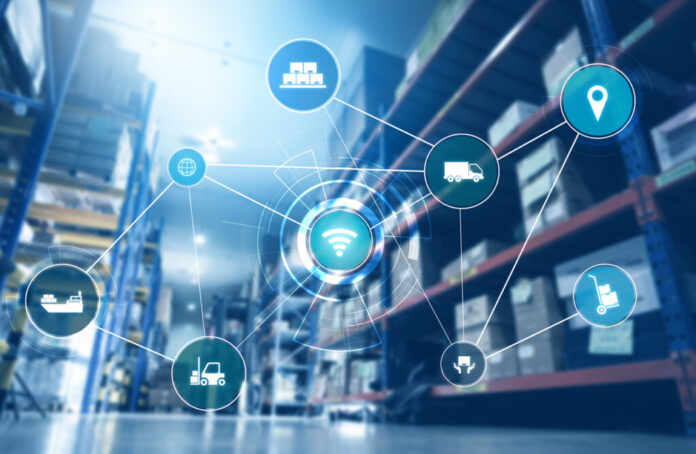In the dynamic world of logistics, the integration of technology has become a game-changer, particularly in Third-Party Logistics (3PL) services. As the backbone of supply chain operations, 3PL providers in Australia are harnessing the power of technology to improve efficiency, visibility, and customer satisfaction. Let’s delve into how technology is reshaping the landscape of 3PL services and revolutionizing the way goods are stored, managed, and delivered
Enhanced Tracking and Visibility
With the advent of advanced tracking technologies such as GPS and RFID (Radio Frequency Identification), 3PL providers can offer real-time visibility into the movement of goods in Australia. Customers and businesses alike can track their shipments from origin to destination, ensuring transparency and peace of mind throughout the supply chain. This level of visibility not only improves operational efficiency but also allows for a quicker response to any unforeseen issues or delays. For example, a retailer in Sydney can use GPS tracking to monitor the exact location of their shipment from a warehouse in Melbourne. If there’s a delay due to traffic or weather, they can quickly adjust their plans and keep customers informed, ensuring a smoother delivery process.
Efficient Warehouse Management Systems (WMS)
Technology-driven Warehouse Management Systems (WMS) have revolutionized the operations of warehouses across Australia. With WMS, warehouses benefit from automated inventory tracking, optimized storage solutions, and efficient order fulfillment processes.
For instance, WMS can automatically allocate the best storage location for incoming goods based on factors like size, weight, and demand, leading to more efficient use of warehouse space. In Australia, 3PL providers are harnessing the power of WMS to streamline their operations, reduce errors, and enhance overall warehouse efficiency. This translates to faster processing times and more accurate deliveries for businesses and consumers alike. For example, a 3PL provider in Melbourne using WMS can fulfill orders faster and with fewer errors, ensuring that products reach customers promptly and in optimal condition.
IoT (Internet of Things) Integration
The Internet of Things (IoT) has transformed 3PL services in Australia by using sensors and smart devices to monitor temperature, humidity, package location, and condition. This technology ensures the integrity of sensitive goods, like pharmaceuticals or perishables, throughout the supply chain. For example, IoT sensors track temperature in storage, keeping perishables fresh. Real-time monitoring of package conditions helps providers respond swiftly to any issues. This proactive approach minimizes risks and guarantees product quality during transit. A 3PL Brisbane provider can use IoT to monitor vaccine shipments’ temperature, ensuring they remain within the required range for effectiveness.
Optimized Route Planning with AI
Artificial Intelligence (AI) is transforming route planning for 3PL providers globally, including in Australia. AI algorithms analyze extensive data to find the most efficient delivery routes, considering variables like traffic, weather, and delivery schedules. This not only cuts transportation costs but also boosts customer satisfaction with timely deliveries. 3PL companies in Australia are embracing AI-powered route optimization to streamline operations and elevate service levels.
For instance, a 3PL provider in Melbourne can use AI to optimize delivery routes, ensuring packages reach customers on time even during peak traffic hours. This efficient use of technology not only saves costs but also improves overall service quality, benefiting both businesses and consumers.
Seamless Integration with E-commerce Platforms
As the e-commerce industry booms in Australia, 3PL providers are seamlessly integrating with online platforms to enhance the customer experience. Through technology, 3PL services can synchronize with e-commerce systems in real-time, from order processing to shipping and returns management. This integration guarantees accurate and swift order fulfillment, catering to the demands of today’s fast-paced online shoppers. For example, a 3PL provider in Brisbane can connect directly to an e-commerce platform, receiving orders instantly and efficiently processing them for shipment. This not only improves the efficiency of the supply chain but also ensures that customers receive their orders promptly, fostering loyalty and satisfaction.
Data Analytics for Strategic Decision-Making
Data analytics has emerged as a valuable tool for 3PL providers, empowering them to make informed, data-driven decisions in Australia. Through the analysis of key metrics such as inventory levels, transportation costs, and customer preferences, 3PL companies can optimize their operations for efficiency and cost-effectiveness. For example, a 3PL provider in Sydney can use data analytics to identify trends in customer demand, allowing them to adjust inventory levels accordingly and minimize stockouts. This strategic approach not only enhances service quality but also enables continuous improvement and adaptation to evolving market trends. By leveraging data analytics, 3PL providers in Australia can stay ahead of the curve, providing reliable and efficient logistics solutions to their clients.
In conclusion, technology in 3PL services is playing a pivotal role today. From enhanced tracking and visibility to AI-powered route optimization and seamless integration with e-commerce platforms, the benefits are vast. 3PL providers are embracing these technological advancements to improve efficiency, accuracy, and customer satisfaction. As the logistics landscape continues to evolve, technology will remain a driving force in shaping the future of 3PL services in Australia.




